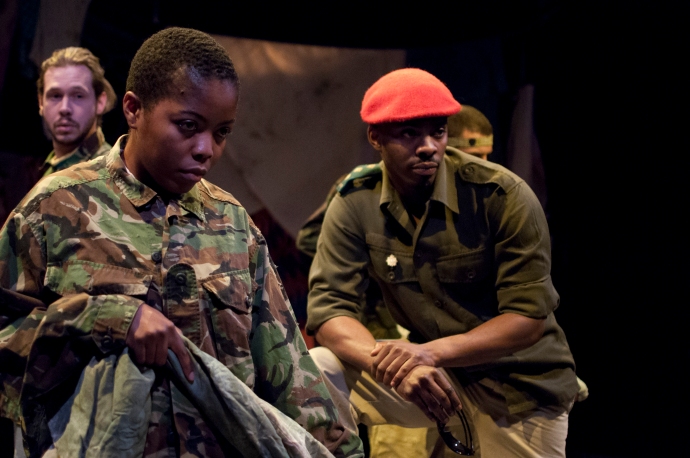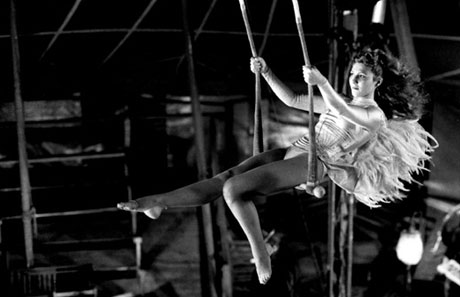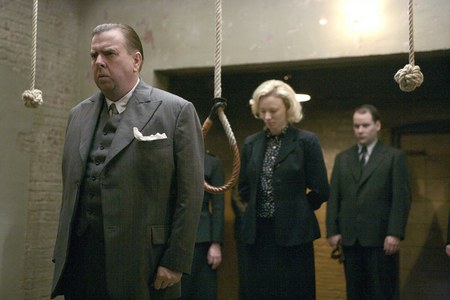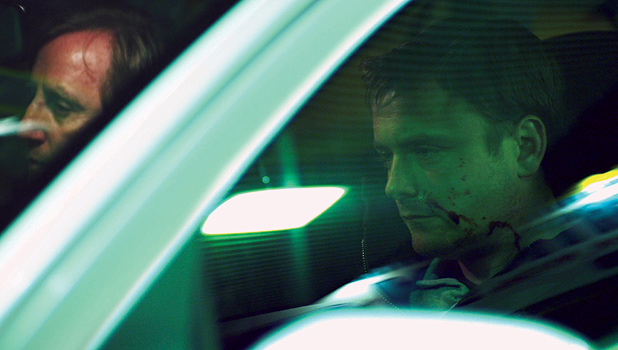Bold subject matter requires bold execution, a fact that I feel much socially-conscious theatre forgets. All too often human interest stories are cloaked in the trappings of conventional staging, leaving the audience at a remove where they can ‘um’, ‘ah’ and ‘appreciate’ the plights of the characters before them. Then we return to our comfortable daily routines and forget all about it: “what an enriching evening of theatre that was…”
Tommy Lexén’s Like Enemies of the State certainly does not let you do this. In equal parts due to its source material and engaging staging, this performance drives home its message like a wake-up call to the guts.
The subject matter: the lives and experiences of child soldiers in the Democratic Republic of Congo. The script: composed almost verbatim from interviews that Lexén conducted in the DRC two years ago.
It is interesting enough that this material reaches us in the format of a play; docu-theatre is not one of the most common mediums around after all. Yet Like Enemies of the State demonstrates overwhelmingly that theatre can do justice to this sensitive material. In fact, the medium is very specifically used to disruptive effect, providing a welcome antidote to some of the banalities of documentary filmmaking.
The four actors do a solid job of jumping in and out of multiple roles, as we are shown snapshots from multiple perspectives. Intimate life stories out of the mouths of child soldiers, the ‘official’ line on their use by the FARDC authorities and an American journalist’s attempts to get closer to the truth all vie for attention on one small stage.
When greeted with unfamiliar material, it is particularly difficult to engage a theatrical audience. Specific references to cultural traditions, institutions and governments that we are unacquainted with can become overwhelming; especially when delivered as concise monologues. Like Enemies of the State does a very good job of avoiding this (all too familiar) problem; firstly by easing us in gently with BBC-style reportage before we are introduced to the central characters. Secondly, through actors breaking the fourth wall and interacting with the audience.
This latter point is integral to the play’s success and demonstrates the advantages of the medium over film. After a church ceremony, the characters administer blessings to the audience, take off their caps and ask for collections. A child who has recently left the rebel army now makes his living selling petrol, and does the rounds of the audience, fixing your gaze with a hopeful look. An intimidating Congolese man known as ‘the Butcher’ (Duane Palmer) offers you a child prostitute with a smirk. As a member of this audience you cannot simply put up the safety barrier and watch it solely as entertainment. You are reminded viscerally that you are connected to the issues at work in the play, which holds a mirror up to our own complacency.
This audience interaction is coupled with skilful multimedia immersion. Film clips are projected onto hanging sheets, drum beats are banged out on crates as the cast break out in impromptu song, and televisions and video cameras are used by the actors themselves.
Ben Osborn and Hiroko Matsuo’s sound and set design are both very well suited to this whirlwind of a play. Scene changes are short and seamless, with all the props and costumes laid out on stage, ensuring that the performance never loses momentum. Characters who are not delivering monologues will constantly be engaged in other activities around the stage, yet it does not detract from the overall focus. What results is a charged environment, where the eye can rest wherever it wishes and find details that amplify the whole.
It is not a rare thing nowadays to witness the ‘unheard voices’ of groups that we were previously unfamiliar with: that is at the heart of the documentary approach. It is however a rare thing to see a performance that elevates those unheard voices into visceral and engaging art.
Like Enemies of the State is the most effective vehicle that could be chosen for its source material and does justice to the children’s stories that lie at the heart of it. For that reason, you should probably go see it.
*** Like Enemies of the State is running from Tuesday 15th – Saturday 26th October at the New Diorama Theatre in London. For more info and tickets, visit: http://newdiorama.com/whats-on/like-enemies-of-the-state ***









